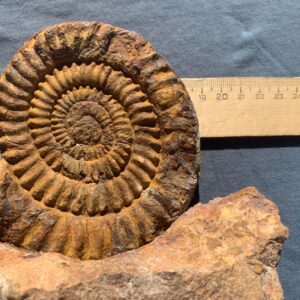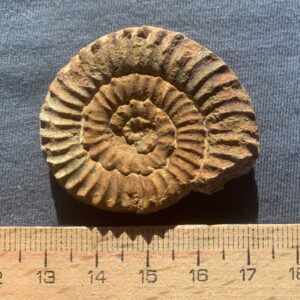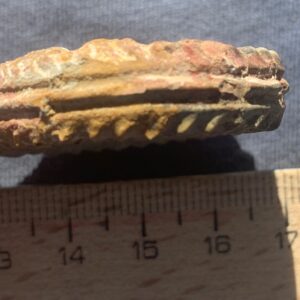
| Species | Coroniceras rotator (REYNES) |
| Author | REYNES |
| Group | Arieten |
| Horizon | rotiformis-horizon |
| Zone | rotiformis-zone |
| Stage | Lower Sinemur |
Description
The cross-section of the windings is round at first, but very soon becomes slightly high oval, the casings are very evolute. The flanks are thickest near the external side and slope slightly convex towards the umbilicus. The ribs start near the navel and become highest near the external side in a distinct spine. Towards the keel the ribs quickly become weaker and then extinguish. The quite irregular ribbing from proradiate to radial on some specimens is striking. Translated with www.DeepL.com/Translator (free version)
Externally, a distinct triple keel and two deep furrows can be observed.
Description according to Waehner (1894)
Compare
C. rotator is distinguished from most coronicerates by a particularly large navel width in combination with a distinct triple keel. Very similar but less wide-billed is C. rotiformis. Nevertheless, it is not excluded that these are extreme forms of the very variable species C. rotiformis.
Dimension
Dimensions with D= 26mm
Nw % v. D: 58%
Wh % v. D: 21%
Wb % v. D: 35%
Literature
1894 Arietites rotiformis Sow.var. rotator Reyn.– Wähner, S. 221, Taf 53.1-2





